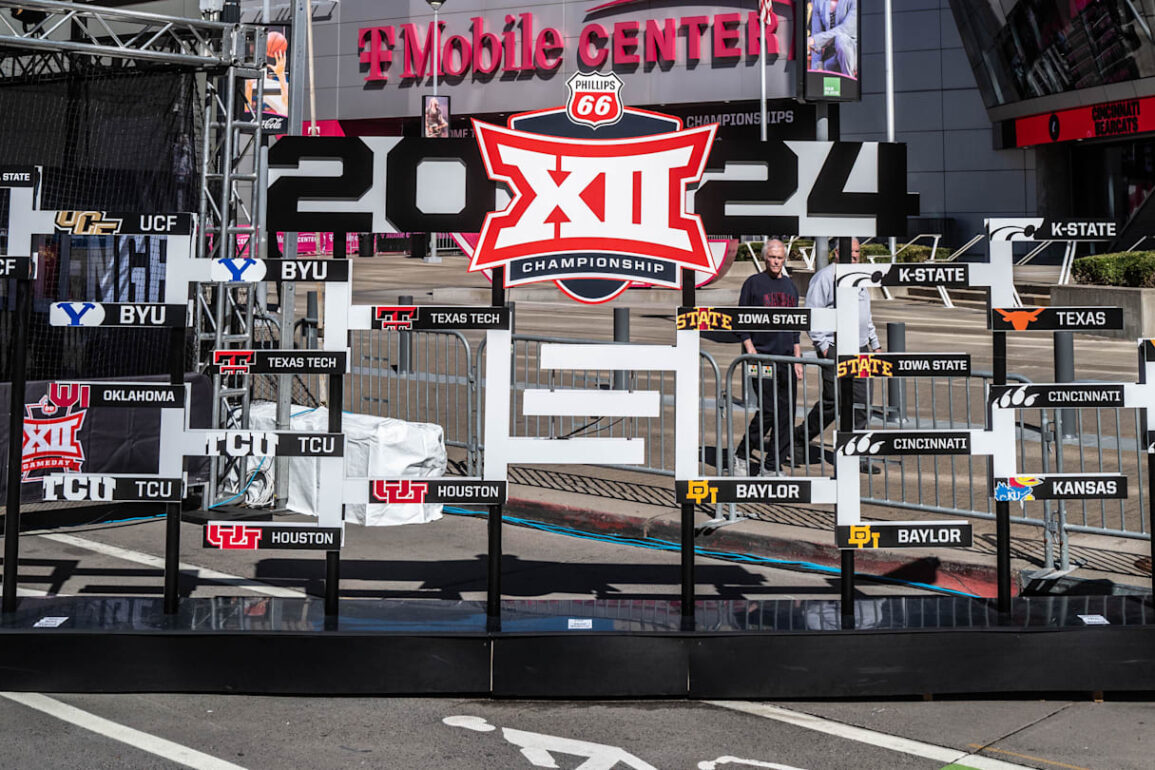
Across nearly every conference’s set of spring meetings this month, the future of the College Football Playoff has been front and center.
As much as the debate has raged on about the big picture (overall size of the playoff) down to the minutia (play-in game format during conference title weekend) on the football side, there has been one postseason topic which has largely escaped seeping into the greater discourse: NCAA basketball tournament expansion.
Much of this has been by design, with agendas already packed to the brim with other topics to discuss such as the sprawling set of complications related to the forthcoming House v. NCAA settlement. Nevertheless, taking March Madness beyond the current 68-team bracket remains lurking in the background as a decision leaders will aim to tackle in the coming months.
At least, as soon as all those other issues get dealt with first.
“The consensus among the coaches was that, even though there was very little [consensus], that we’d be in favor of that,” said Kansas Jayhawks men’s basketball coach Bill Self at Big 12 meetings in Orlando on Wednesday. “I don’t know what the number will go to, but I know there’s discussions about that.”
NCAA president Charlie Baker has openly advocated in the past about a move to a 72- or 76-team format and various committees have studied the topic dating back to last summer when the conversations took on a far more serious tone. SEC commissioner Greg Sankey, even prior to his league getting 14 of 16 schools into the Big Dance this past season, has been a proponent as well and been kept abreast of the subject.
Still, there’s a growing acknowledgement among many administrators that as soon as the House settlement is implemented and the CFP format for 2026 and beyond can (hopefully) be finalized, attention can turn back toward the feasibility of growing the NCAA tournament to reflect Division I membership, which has swelled in recent years.
Ultimate decision making on the subject lies with the NCAA men’s basketball committee which, a source tells Sports Illustrated, will meet in person in July to discuss in addition to determining future championship host sites and more.
There’s also the question of what everything in college athletics has become about: money.
The current media contracts for the NCAA men’s basketball tournament do not require broadcasters to pay any extra revenue for more games if the format is expanded. Given that there is a cost associated with staging more games and flying teams to additional sites around the country, any thought of expansion in terms of the conference payouts is generally viewed negatively.
Complicating things further is the state of the companies holding those contracts, which currently run through 2032. CBS and parent company Paramount Global remain in limbo amid a merger with Skydance Media while Warner Bros. Discovery has been exploring spinning off cable assets like the TNT, TBS and truTV channels that also broadcast March Madness. Neither appear to be in a position to make a move on any changes to the contract at the moment. However, they would probably be fine with additional inventory at little to no cost if the NCAA still wants to proceed on expansion.
There’s also the matter of whatever happens on the men’s side impacting the women’s bracket. The NCAA’s new broadcast deals with ESPN signed last year contain provisions related to expansion, but making it worthwhile for all involved on the bottom line is still a bit up in the air.
“I don’t know if there’s a group vibe. I don’t know how far along we are of that actually happening,” acknowledged Kansas women’s basketball coach Brandon Schneider of the expansion talk. “From the control [what we can control] perspective, we’re trying to read everything we can to position ourselves to have as many teams in the NCAA tournament as it currently exists.”
“We haven’t had that specific type of conversation on what that number would be,” TCU counterpart Mark Campbell said. “It’s more so, the number is 68, how do we get as many teams in as possible?”
Indeed, stuffing the current bracket with a higher percentage of teams remains the overriding discussion for leagues in recent weeks even before getting to the sometimes heated conversation about overall tourney expansion. At ACC meetings earlier in the month, coaches discussed a variety of proposals designed to boost the number of programs hearing their name called on Selection Sunday. The Big 12 recently approved a move to go from 20 conference games to 18 in order to improve its at-large chances next March.
“You’ve got to keep up. This league is competitive. The SEC, they got 14 teams in the NCAA tournament this year and we only had seven,” Houston Cougars men’s coach Kelvin Sampson said. “The great thing about the Big 12 is that the history of our conference says that we have passionate fan bases that expect their teams to be competitive. Now we’ve shown where we are, and things are good, but … it’s hard not to think about where are we going to be in five years? How can we be proactive and keep our league moving forward?”
While every conference is using this time on the calendar to focus inward on all the things they can do in order to become more competitive, the discussion about the simplest solution of all—just having more spots for leagues which have ballooned to 16 and beyond—will continue in the background.
The debate over the College Football Playoff format is clearly sucking up plenty of oxygen at the moment, but the little matter of America’s most prestigious tournament expanding further still appears to be on the agenda for well beyond the busy month of May.
This post was originally published on this site be sure to check out more of their content.









